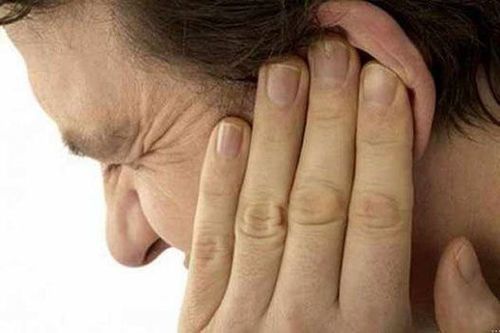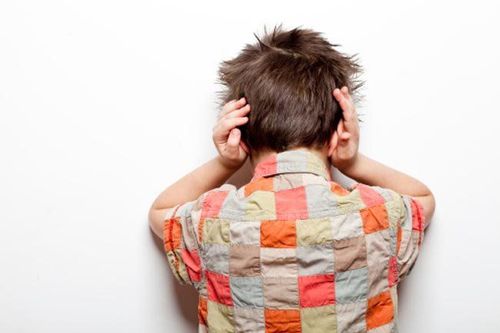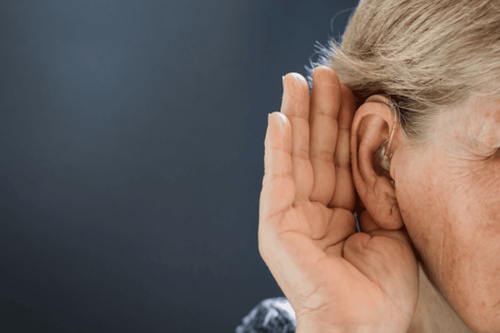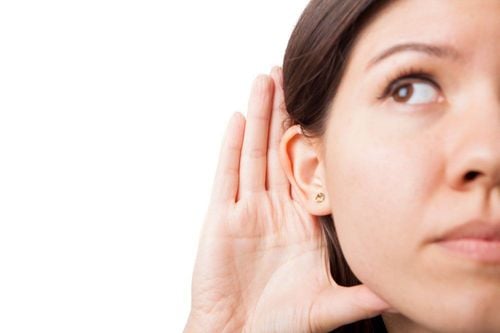This is an automatically translated article.
Do you really know the most common cause of hearing loss, the cause of hearing loss or the cause of deafness? If you know these causes, it will be the key to helping you prevent and find effective recovery solutions. Let's read the article below to help you better understand this issue.
1. Things to know about hard of hearing, deafness and hearing loss
More than 5% of the world's population - or 430 million people - require rehabilitation to address their “disabling” hearing loss (432 million adults and 34 million children). It is estimated that by 2050 more than 700 million people or one in ten people will have hearing loss. While not all forms of hearing loss are preventable, you can take steps to reduce your risk of developing age-related hearing loss and/or noise-induced hearing loss.
“Disabled” hearing loss refers to hearing loss greater than 35 decibels (dB) in better headphones. Nearly 80% of people with hard of hearing, deafness and hearing loss live in low- and middle-income countries. Rates of hearing loss increase with age, among people over 60 years of age, over 25% are affected by hearing loss.
A person who is not able to hear as well as people with normal hearing - the threshold of hearing in both ears is 20 dB or better - is said to have hearing loss. Hearing loss can be mild, moderate, severe, or severe. It can affect one ear or both ears, and lead to difficulty hearing conversational voices or loud sounds.
Hard of hearing: refers to people with mild to severe hearing loss. People with hearing loss often communicate in spoken language and may benefit from hearing aids, cochlear implants and other assistive devices, and captions.
People who are deaf mostly have severe hearing loss, which means little or no hearing. They often use sign language to communicate with people.
Hearing loss, deafness, hard of hearing or hearing loss is the inability to hear all or part of sound. Symptoms can range from mild, moderate, severe to profound. A patient with mild hearing loss may have difficulty understanding speech, especially if there is a lot of background noise, while those with moderate hearing loss may need hearing aids.
Some people are severely deaf and rely on lip reading to communicate with others. People who are severely deaf cannot hear at all and may find themselves completely dependent on lip reading or sign language. In the United States, approximately 15% of Trusted Sources of people over the age of 18 report some degree of hearing loss.
It is important to distinguish between different degrees of hearing loss:
Hearing loss: This is a decrease in the ability to hear sounds in the same way as others. Deaf or severely impaired: This occurs when a person cannot understand speech through hearing, even when the sound is amplified. Severe Deafness: This refers to a complete hearing loss. A person who is completely deaf will not be able to detect sound. The severity of hearing loss is graded by how loud the volume needs to be set before they can detect sound. Some people define profound deafness and total deafness in the same way, while others say that a diagnosis of profound deafness is the end of the auditory spectrum.
1.1. How does hearing work?
Sound waves enter the ear, travel down the ear or auditory tube, and then strike the eardrum, causing vibration. The vibrations from the eardrum are transmitted to three bones called the bones in the middle ear. These fluids amplify the vibrations, which are then picked up by tiny hair-like cells in the cochlea.
They move when vibrations are applied to them and motion data is sent through the auditory nerve to the brain. The brain processes data that in a person with functional hearing would interpret as sound.

Có nhiều nguyên nhân mất thính giác
1.2. Types of hearing loss
There are three different types of hearing loss:
Conductive hearing loss
This means that vibrations will not travel from the outer ear to the inner ear, specifically the cochlea. This type can happen for a variety of reasons including:
Excessive accumulation of earwax Ear glue Ear infection with inflammation and fluid accumulation A perforated eardrum Malfunction of the ossicles A faulty eardrum Infection The ear can leave scar tissue, reducing eardrum function. The blisters can become weakened by infection, injury, or fuse together in a condition, also known as ankylosing spondylitis.
Sensorineural hearing loss
Hearing loss is caused by dysfunction of the inner ear, cochlea, auditory nerve or brain damage. This type of hearing loss is normally caused by damage to the hair cells in the cochlea. As people age, hair cells lose some function and hearing deteriorates.
Long-term exposure to loud noises, especially high-frequency sounds, is another common reason for hair cell damage. Damaged hair cells cannot be replaced. Currently, research is looking at using stem cells to grow new hair cells.
Total sensorineural hearing loss can occur from birth defects, inner ear infections, or head trauma.
Mixed hearing loss
This is a combination of conductive and sensorineural hearing loss. Long-term ear infections can damage both the eardrum and the eardrum. Sometimes, surgical intervention can restore hearing, but it is not always effective.
2. 3 most common causes of hearing loss, hard of hearing or deafness
Many adults are suffering from hearing loss these days, making it one of the most common health problems people face. So what is the cause of hearing loss or the cause of deafness, what is the cause of hearing loss?
While most causes of hearing loss or deafness, the causes of hearing loss are well understood, researchers are still studying all the possible causes, to find the best possible causes. prevention methods and effective treatment options. In some cases, the cause cannot be determined. There are many different causes of hearing loss, ranging from aging to genetic conditions to noise exposure. Identifying the cause is an important step in finding the right treatment. Here are the 3 most common causes of hearing loss, hearing loss or deafness:
2.1. Causes of hearing loss or causes of hearing loss, causes of hearing loss due to age
The most common type of hearing loss is called age-related hearing loss, or senility. This means that hearing loss occurs gradually over time. As with other body changes associated with aging, hearing loss is a normal - but treatable - part of the aging process. You may not realize it's happening until your symptoms become severe or someone else notices that you're having a problem.
This type of sound loss is permanent and often makes it harder for you to hear what are known as "high frequency" sounds, such as children's voices, birds chirping, or telephone ringing.
What are the main symptoms that suggest you may have age-related hearing loss? At first, you may feel like you can hear, but not understand. You may find some sounds annoying or too loud. You may also notice more episodes of tinnitus.
False whistle is a form of sensorineural hearing loss, which means it occurs due to changes in the ear as a person ages. It can also be the result of changes in the middle ear, or along the nerve pathways leading to the brain. As you age, heart-related conditions such as high blood pressure also affect your ability to hear.

Nguyên nhân mất thính giác có thể do yếu tố di truyền
2.2. Causes of hearing loss or causes of hearing loss, hereditary causes of hearing loss
Looking at the young girl's ear with a small blue hearing aid, we can predict the cause is genetic factors that account for many cases of hearing loss in children.
Hereditary hearing loss can be conductive, neurosensory, or mixed and is sometimes the result of a trait inherited from parents. There are more than 400 known rare and inherited syndromes that include hearing loss. It is more likely to be identified as genetic testing becomes more and more complex.
The degree of shedding can vary greatly from person to person, including people with the same genetic condition. For some people, hearing aids are enough. For others, cochlear implants and/or learning American Sign Language would be recommended. While many genetic hearing impairments are congenital (present at birth), some of these conditions develop slowly over time.
2.3. Causes of hearing loss or causes of deafness, causes of hearing loss due to noise
Noise-induced hearing loss is caused by prolonged exposure to loud noises. The culmination of regular daily exposure to sounds such as traffic, construction work, noisy office environments or loud music can negatively impact your hearing. Although noise-induced hearing loss is often temporary in nature, overexposure to repeated loud noises makes it harder for the ear to recover between events. Noise damages inner ear hair cells, causing hearing loss over time and becoming permanent.
Remember: Noise-induced hearing loss is largely preventable.
You can significantly reduce your risk of hearing loss by limiting your exposure to loud noises, using earplugs in noisy environments, and using headphones wisely.
Please dial HOTLINE for more information or register for an appointment HERE. Download MyVinmec app to make appointments faster and to manage your bookings easily.
References: webmd.com, betterhealth.vic.gov.au, mayoclinic.org













